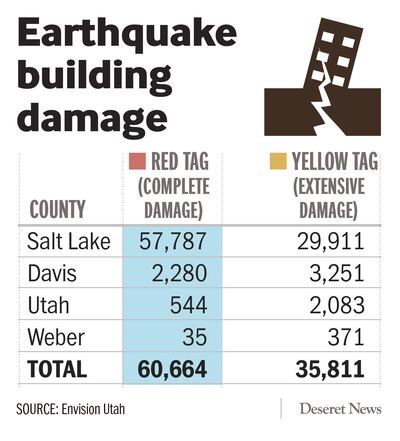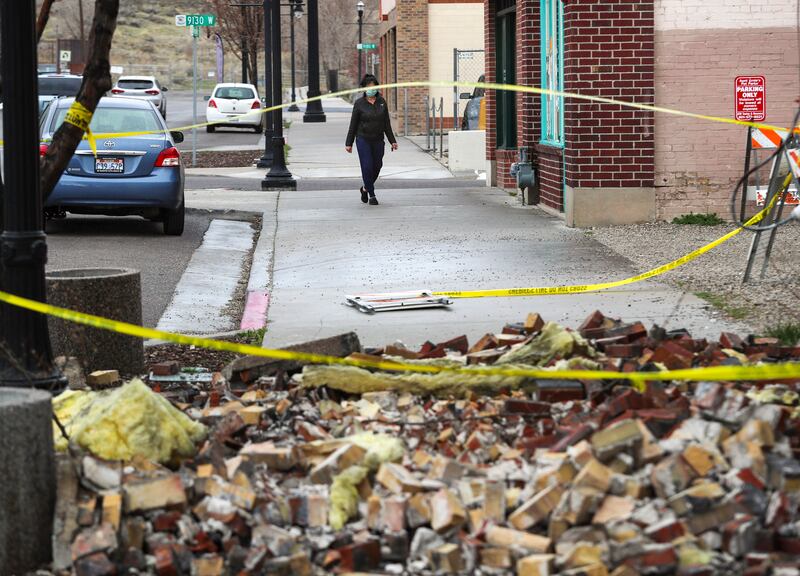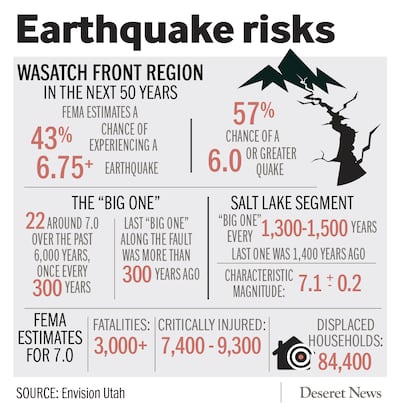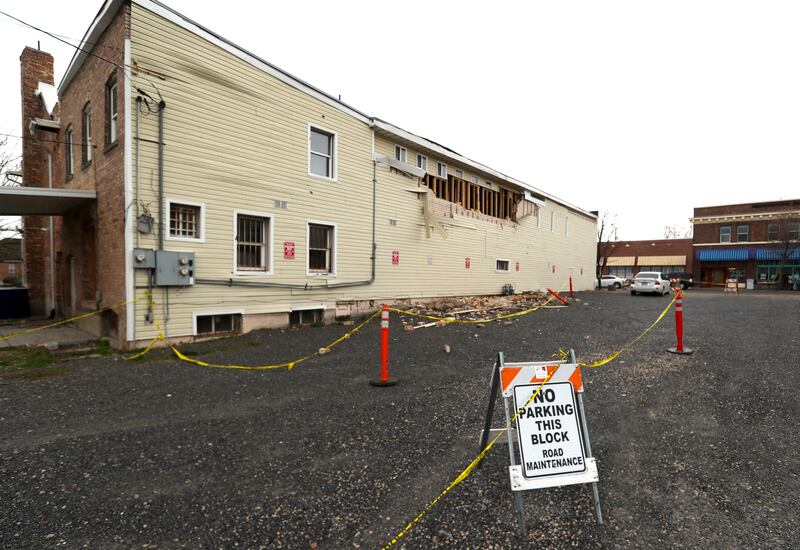SALT LAKE CITY — Last week’s earthquake may have jolted nearly 3 million Utahns out of their dismissiveness when it comes to the Wasatch Fault being overdue for the big 7.0 magnitude shaker, so experts are seizing on the opportunity to stress the need to prepare — and prepare some more.
In fact, Envision Utah has released a compilation of data gathered over the years that illustrates just how devastating it would be if one were to happen in Salt Lake County and is preparing to launch an explanatory publication on disaster resilience planning.
“The idea is that if the unthinkable were to happen, let’s make sure we have done enough in advance so we can bounce back and get back to life as normally as possible,” said Ari Bruening, president and CEO of Envision Utah.
Federal Emergency Management Agency modeling predicts more than 3,000 deaths, 9,300 people critically injured and 84,400 displaced households if a 7.0 magnitude earthquake were to hit Salt Lake County.

More than 57,000 buildings in Salt Lake County would be extremely damaged or unsafe to enter and more than 300,000 households would be without potable water for 90 days.
“A major earthquake on the Wasatch Fault will probably be the most costly natural disaster in U.S. history,” said Joe Dougherty, spokesman for the Utah Division of Emergency Management.
“Just in building damage alone, it will be $33 billion,” he said, adding that the earthquake would cripple interstate commerce since Utah hosts so many critical transportation routes such I-15 for north/south movement of goods and east/west movement via I-80 and I-70.
Dougherty also threw out the scenario of prolonged shaking. Last Wednesday’s earthquake only lasted a matter of seconds, but what if the area had a minute of shaking?

The majority of Salt Lake County is also at risk for liquefaction, which is the ground acting like liquid and sinking — which leads to even more violent shaking.
“The long and short of it is that it will devastate our economy, our way of life and will take us decades to recover,” Bruening said.
Keith D. Koper, director of the University of Utah Seismograph Stations, said the geologic record shows there have been 20 of those magnitude 7.0 earthquakes over the last 10,000 years.
One generally happens around every 300 years, according to Envision Utah, and the last one happened more than 300 years ago.

Last year, experts convened a summit on unreinforced masonry structures in Salt Lake County to look at those buildings at risk — an estimated 140,000 of those structures remain— having been constructed before more stringent earthquake codes were in place. Some of those suffered significant damage in last week’s quake, which as of late Tuesday had triggered 662 aftershocks. The most recent was on Tuesday.
Bruening said Envision Utah, for its disaster resiliency planning, is focusing on homes and buildings and how to make sure fewer collapse in the event of a 7.0 magnitude event. They are also looking at public utility infrastructure.
Preparation has been going on by federal, state and local partners for years, and in 2021, the Wasatch Front is the setting for FEMA’s National Priority Focus exercise.
As Envision Utah enters this next phase of data gathering, Jason Brown, the organization’s vice president of communications, said beyond looking at an individual family’s readiness and preparedness, it is important to look at a community’s preparedness to address vulnerabilities into the future.
Damage assessment is continuing on the ground in Salt Lake County and elsewhere, and it will some time before officials know if federal disaster relief will be necessary, if at all, Dougherty said, for Wednesday’s earthquake.
Region 8 FEMA spokesman Brian Hvinden said the agency is the last backstop.
“FEMA will come in when the capacity to respond is beyond that of state and local governments to respond. Fortunately on this event, we have seen the communities of Magna and Salt Lake City are really doing good on this response,” he said.
FEMA will also not cover damage on any public infrastructure that is not already insured, he added, and is only available on a very limited basis for private damage.



